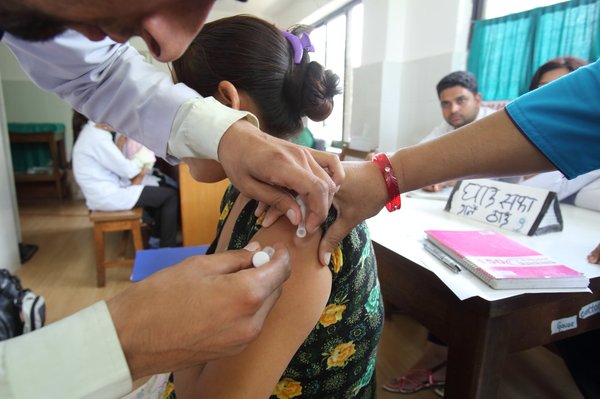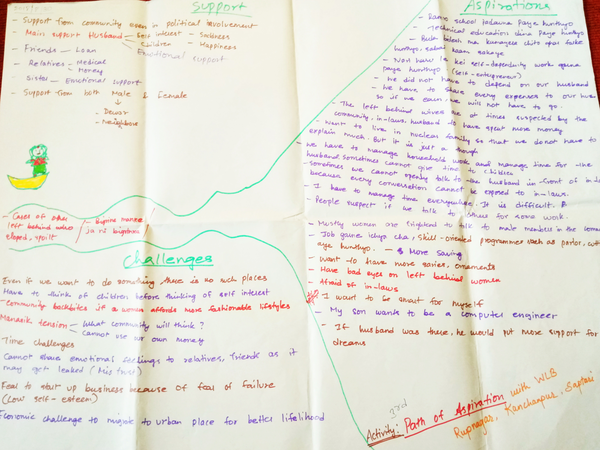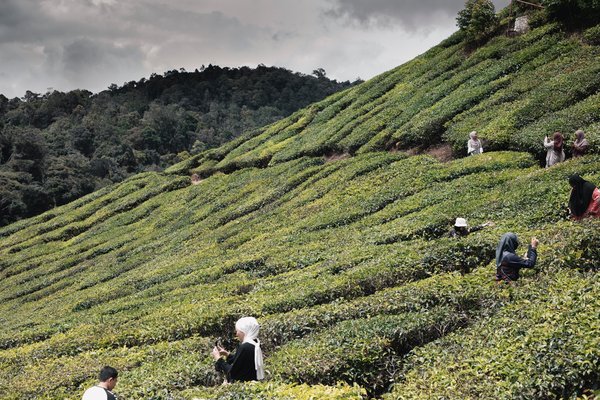
Photo by Anita Ghimire, MIDEQ
7.4 percent of Nepal’s 28 million people work abroad, more than twice the global average. The primary responsibility for the wellbeing of these migrants lies with the government. However, a myriad of labour exploitation cases demonstrate the inability of home country government to ensure migrant wellbeing of their nationals in the destination countries where matters are beyond their jurisdiction. COVID-19 has shown that the return process during the crisis requires the home country to extend support for returnees already in the destination country. Co-ordinating and managing large-scale return requires ample resources- both financial and otherwise. Learning from the experience of COVID-19 and return management in Nepal, this blog highlights some resources which the Government of Nepal could have used for better managing the return process.
The difficult journey into Nepal
Due to COVID-19, many Nepali migrants from India, Malaysia and Gulf countries were forced to return to Nepal suddenly. Particularly those returning from India had taken return decisions without being prepared for the challenges they would face. The return journey for them was difficult; long and tiring travel on foot to reach the Indo-Nepal border and thereafter staying in Indian camps sleeping in open with inadequate food, water and sometimes facing violence and threats from the guards. There was no solace upon arrival on the Nepal side either. Returnees had to stay in the buses for days without proper food and water as quarantine centres did not have capacity to accommodate them. Due to border closure, the groups at the border grew thus multiplying the risk of transmission. Stranded and hopeless, they were unsure when they could go home, or return to India. The Government was unprepared to handle the daunting situation.
The circumstances did not come out of the blue and, with better preparation, the situation could have been averted by the Nepali government. Human rights and civil society groups in Nepal had alerted the government to the issue of mass return, highlighting that existing provisions would be inadequate to respond to the situation. Health officials too had forewarned that if not handled well, mass return could lead to exponential transmission. We did not have to wait long for the implications to manifest. Local authorities were overwhelmed by the mass influx, and with limited resources had no way of dealing with the social and emotional repercussions of the influx (such as stigmatisation of certain ethnic groups) and basic management such as conducting COVID-19 tests or provisions in quarantine centres.
Situation of quarantine centres
The government made protocols for quarantine adhering to WHO guidance. However, with the available resources, it was impossible to follow it. Resources were inadequate to ensure safety, dignity, provide minimum basic requirements and meet the needs of vulnerable populations in quarantine centres. The majority of the quarantine centres were schools. Pregnant and lactating mothers were kept with men, whilst older persons and persons with disabilities were kept far from bathroom facilities, and women were kept in rooms without proper locks.
Quarantine centres were over crowded which increased the risk of transmission exponentially. Since there was no one to monitor the centres, people did not wear masks or maintain social distance because it was impossible to do in that environment. Further, migrants underestimated the risk or were just too tired to care. The majority of Nepali migrants who go to India come from poor families. They could not afford the COVID-19 test (NPR 5000 initially) especially with many having returned without getting their wages for months.
The journey to hometowns from Nepal’s border was no less arduous. After finally being allowed to enter their home country, there were no vehicles to transport them to their home villages. Migrants had to walk continuously for 5-6 days to reach their hometowns. Additionally, they were not tested when they arrived home. This had two implications. First, if they were infected they spread the virus to their family members and neighbours. Second, in Nepal, the first few to be detected COVID-19 positive were all returnees. Thus there was community resentment towards returnees as virus carriers. Furthermore, since the journey required them to walk for days without proper food, water and shelter, migrants were weaker and so more vulnerable to infection.
Lessons for ways forward
While there is no magic bullet to the challenges, there are ways of pre-mapping and wisely using available resources both in supporting return preparation in the destination country itself and when migrants arrive at the border. The central and local government along with the Nepali embassy in the destination country could have used existing knowledge and resources to better manage the return process. Drawing on experiences learnt from the ways in which return was managed so far, the following are lessons provide a way forward:
- Pre-return orientations: Migrants start making decisions to return when they are in the destination country, hence a major part of preparatory assistance should be undertaken in the country of destination. Pre-return orientations such as providing information of documents required for return, return process and transport arrangements, providing temporary shelter and food and emergency medicines are important Support is needed before migrants decide to return.
- Nepali diaspora groups: The government could call upon based Nepali diaspora groups based in destination countries such as the Non-residential Nepali Association (NRNA) to extend counselling, basic provision (temporary shelter, food, primary healthcare) safety and protection services to prepare migrants for their return. Given that NRNA already engages in philanthropic activities and is better resourced than the Nepal’s embassy in some destinations, this will ease the human and financial pressure on the embassy, increase coverage and reach and make government response better.
- Civil Society Groups: Apart from the NRNA, there are many other organised and loose civil society groups in the destination who have always helped fellow migrants in need and thus could support in preparing for return. The Nepali embassy could call upon these groups and facilitate them to support each other and the NRNA to increase service coverage.
- Disaster Risk Reduction and Management: All 77 districts of Nepal have a disaster risk reduction and management (DRRM) plan which maps available local resources, central government and door support funds, and makes disaster mitigation, preparedness, response and recovery plans. The DRRM committee, which consists of government and civil society groups, updates this DRRM plan yearly so they can quickly respond to disasters. However, so far the plan only works for natural disasters and non-migrants. The lesson from COVID-19 is that such plans henceforth should also take into account migrant populations, potential returnees and should include plans for health related disasters as well.
- Local Government support: With years of resource investment, training and donor support, the Nepal government has created very rich civil society groups (such as the ward citizen forum, civic awareness centres) in each ward of the country. They play a critical role in linking local people to government services and supporting the government in service delivery, such as social protection allowances, relief support, during disasters. Such groups in the border districts can be used to provide on-line information, counselling and in service delivery monitoring during the pandemic as well.
Labour migration will continue to be an important livelihood strategy for Nepali people for a foreseeable future. The COVID-19 situation in Nepal has given important lessons on managing return migration. Work needs to be done prior to migration so people are better able to cope with situations of disaster and pandemics when they are in the destination but also during their return home.



